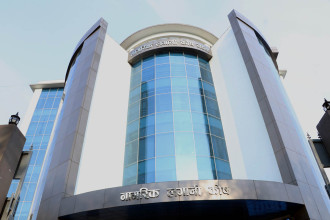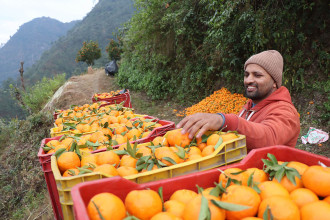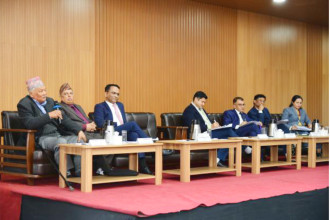
KATHMANDU: Financial institutions are seen to be tightfisted when it comes to the agricultural production sector, the Monetary Policy for the fiscal year 2022/23 states. The monetary policy was unveiled by Nepal Rastra Bank on Friday.
According to the NRB, the financial institutions were required to invest 15% of their investable amount in the agriculture sector but they are found to have invested only 12.8% of this amount.
"On the one hand the import in agriculture has peaked and the financial institutions are seen to be parsimonious in investing in this sector on the other hand. This means dependence on foreign imports in agriculture is not going to lessen any time soon," economist Bhawani Khanal said.
The financial institutions had invested Rs 490 billion 150 million in the agriculture sector by the end of the last fiscal year, 2021/22. Investment of this amount means nearly 3% less than the 15% amount that they are required to invest.
The number of farmers taking concessional agricultural loans during that period as of June 14 is 60,618. They took concessional loans amounting to Rs 139 billion 684 million.
The budget for the fiscal year 2022/23 states that a balanced agricultural trade will be maintained in the next five years by means of agriculture transformation. Although it is mentioned in point no. 18 of the budget document that the import of rice, maize, wheat, vegetables and fruits should be decreased by 30%, the financial institutions are not enthusiastic about investing in agriculture to reduce imports.
"There is a large population of small farmers in Nepal," said Uddhav Adhikari, the coordinator of the Agriculture Campaign for Food. He said the Monetary Policy and the budget for the fiscal year 2022/23 are not in favour of the actual small farmers.
The Monetary Policy has made provisions by which the real agriculture entrepreneurs can take project loans of up to Rs 2 million for running an agricultural business. However, the small farmers are not likely to benefit from this provision.
It is estimated that there are around 8 million small farmers in the country. Most of the small-scale farmers, who earlier run projects keeping collateral, have no projects.
Middle-class farmers, who have run projects keeping collateral in the bank, will be benefitted from this arrangement. Small scale farmers have fragmented arable land but the land is left uncultivated due to lack of timely fertiliser, seeds and irrigation facilities. Though the government had brought a plan to manage the fragmented land, it has not been effective.
The budget of the current fiscal year has laid emphasis on production through modernisation, commercialisation and mechanisation of agriculture. But there are no symptoms of reduction of dependence on agriculture immediately as arable land is gradually becoming barren, the population involved in farming becomes centralised in the cities and selling arable land as housing plots.
The monetary policy has mentioned making the agriculture loan, mentioned in the budget, effective through the establishment of a microfinance fund.
Small scale farmers are found elated after the policy mentioned that the amount deposited in the fund will be taken to the doorsteps of the farmers.
By RSS
READ ALSO:
Published Date: July 24, 2022, 12:00 am
Post Comment
E-Magazine
RELATED B360 National





